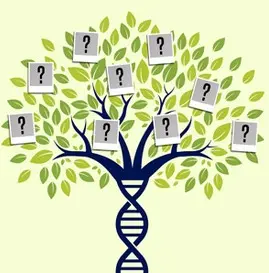Genetic Genealogy Solves Crimes

by Anna Haas ‘23
 Though most people know genealogy as the study of families and lineages, the term genetic genealogy is less common. Genetic genealogy is the combination of DNA analysis and traditional genealogy research to discover leads in crime cases. Genetic genealogy is most often used to help solve cold cases through the examination of nearly half a million single nucleotide changes to DNA that then allow scientists to identify sections of DNA that may be shared between a crime scene sample and an individual.
Though most people know genealogy as the study of families and lineages, the term genetic genealogy is less common. Genetic genealogy is the combination of DNA analysis and traditional genealogy research to discover leads in crime cases. Genetic genealogy is most often used to help solve cold cases through the examination of nearly half a million single nucleotide changes to DNA that then allow scientists to identify sections of DNA that may be shared between a crime scene sample and an individual.
The use of genetic genealogy to solve crimes began with the arrest of the Golden State Killer in California in 2018. Though the killings and rapings happened in the 1970s and 1980s, the case remained unsolved due to a lack of leads and concrete evidence. Then, in 2018, new developments in genetic genealogy and the help of genealogy sites such as FamilyTreeDNA and MyHeritage led to the discovery and arrest of the murderer.
Though the arrest of the Golden State Killer was the first time genetic genealogy had been used to catch a killer, the case is not considered the first one solved due to genetic genealogy since it was only used to make the arrest before the killer pleaded guilty. The first case fully solved using genetic genealogy was done so in 2019 with the conviction of William Earl Talbott II who was accused of murdering Jay Cook and his girlfriend Tanya Van Cuylenborg in 1987. DNA sampling, databases, and the help of one of the world’s leading genetic genealogists, CeCe Moore, allowed law enforcement to discover and arrest Talbott. The evidence found using genetic genealogy was then also used in court to convict Talbott.
However, genetic genealogy is by no means infallible. Like any forensics dependent on DNA, genetic genealogy can become subject to human biases that may accuse the wrong people if care is not taken with how the information is interpreted. Genetic genealogy uses autosomal DNA, the type that is inherited from all ancestral lines. While that allows for almost unlimited avenues of discovery, it also can lead to many mistaken accusations in the world of crime solving. Although autosomal DNA gives a much more specific presentation of a person, false identification, typos in the DNA profile, and false positives are all still possible. In addition, autosomal DNA is unable to distinguish between siblings because of how similar their DNA is. Due to this, an arrest cannot be made until a fresh DNA sample is tested. Genetic genealogy can point to who the perpetrator likely is, but it cannot give a definite answer. Even so, genetic genealogy has proven to be a powerful tool in police investigations.